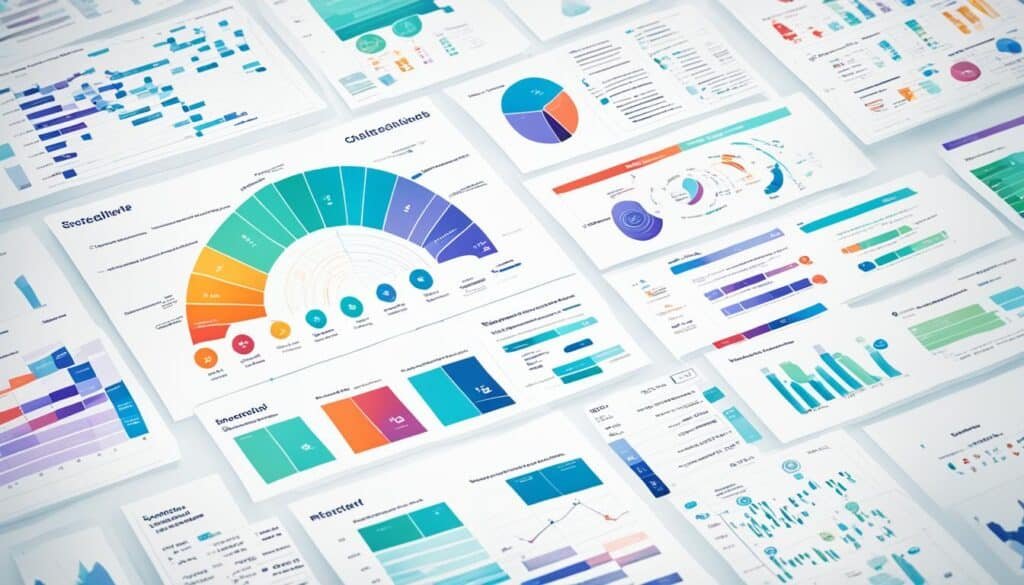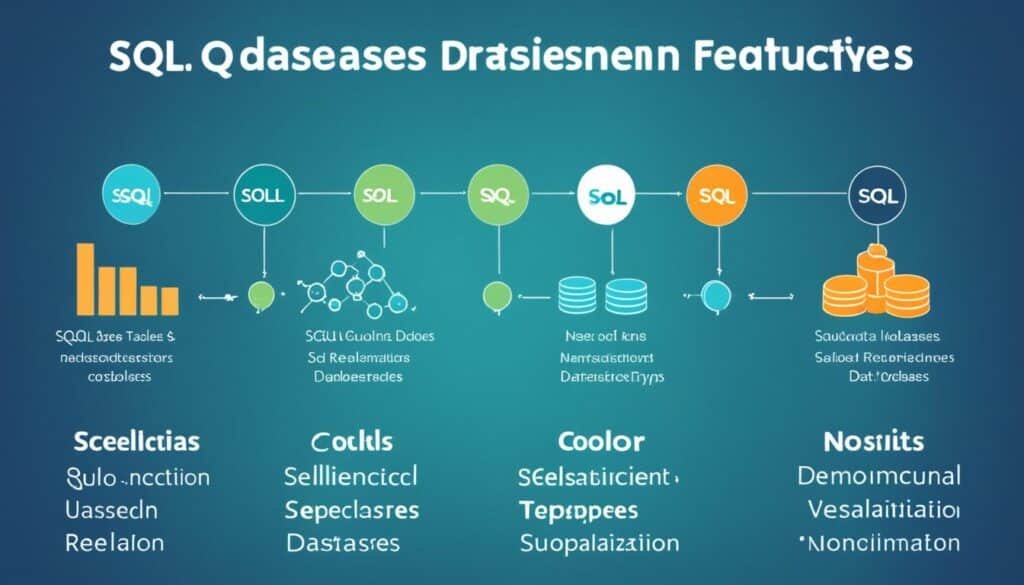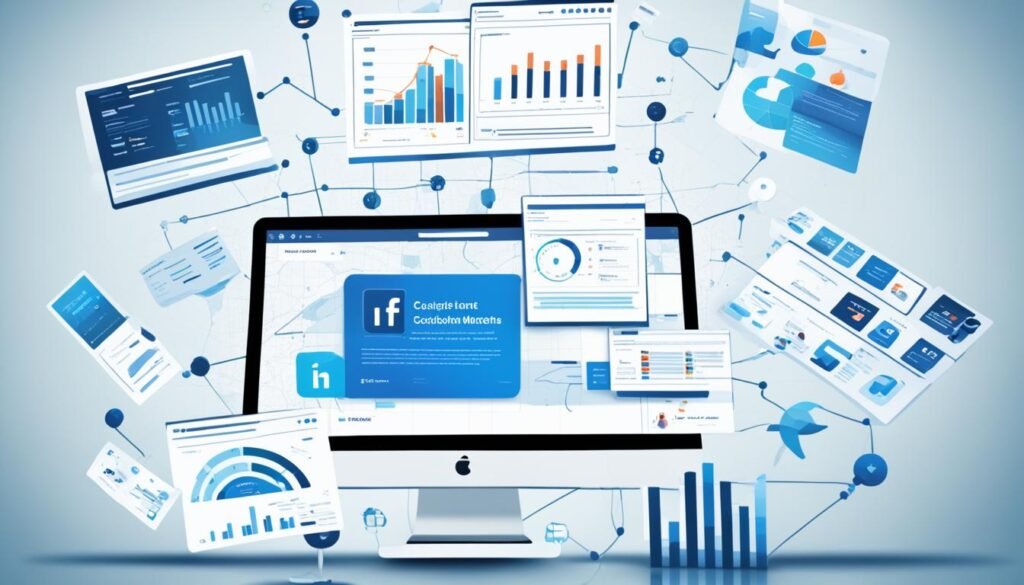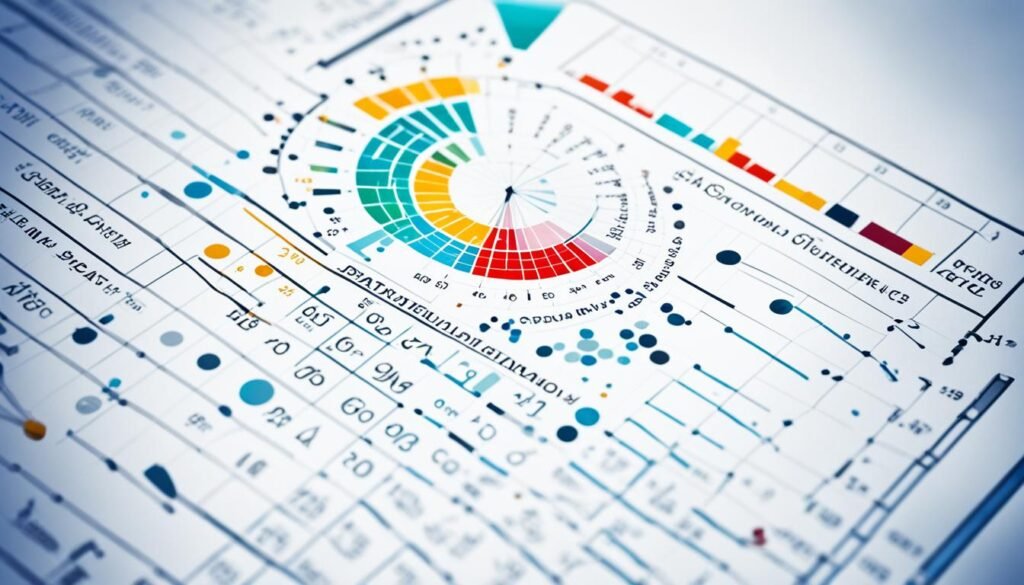In today’s data-driven world, the demand for skilled data scientists is on the rise. Employers are actively seeking candidates who possess the right mix of technical and interpersonal skills to excel in data scientist jobs. But what exactly are these skills? And why are they so important in the eyes of employers?
According to Accenture, 79% of enterprise executives believe that organizations that do not incorporate big data into their growth strategy will lose their competitive edge. Data scientists play a crucial role in collecting, cleaning, analyzing, and visualizing data to distill valuable business insights. They also develop machine learning structures and data products to help organizations make more effective decisions. To succeed in data scientist jobs, candidates need to have strong technical skills and the ability to collaborate and communicate effectively.
Key Takeaways:
- Data scientists are in high demand due to the increasing importance of big data in organizational growth strategies.
- Candidates need to possess a mix of technical and interpersonal skills to excel in data scientist jobs.
- Technical skills are essential for collecting, analyzing, and interpreting data.
- Soft skills like collaboration and communication are crucial for effective teamwork and communication of findings.
- Employers value candidates who can apply their skills to solve real-world business problems.
Technical Data Scientist Skills
Data scientists play a crucial role in the field of data science, requiring a range of technical skills to excel in their roles. While advanced knowledge in data science typically requires an advanced degree, there are opportunities for entry-level positions with a bachelor’s degree in Math, Statistics, Economics, Engineering, or Computer Science. However, candidates can take further steps to enhance their resumes with specialized training programs or boot camps focused on analytical areas such as predictive analytics or data mining.
Aspiring data scientists often choose to specialize in specific areas based on their interests and career goals. Specializations such as Business Intelligence, Decision Science, or Machine Learning can offer a competitive edge in the job market. Before pursuing specialization, candidates should establish a solid foundation of technical skills that can serve as a strong base for their career growth.
Here are some essential technical skills that data scientists should possess:
Data Visualization
Data visualization is an important skill for data scientists as it allows them to present complex data and findings in a visually appealing and understandable format. Through the use of charts, graphs, and other visual representations, data scientists can effectively communicate insights to stakeholders across different roles and departments.
Python Programming
Python is a widely used programming language in the field of data science. Its versatility and extensive libraries make it the preferred choice for data analysis, machine learning, and other data-related tasks. Data scientists should have a strong command of Python, including its syntax and various libraries, to manipulate and analyze data efficiently.
SQL/NoSQL
Data scientists need to work with databases to retrieve and manipulate data effectively. Familiarity with Structured Query Language (SQL) is essential for working with traditional relational databases, while knowledge of NoSQL databases enables data scientists to handle unstructured or semi-structured data sources. Having proficiency in both SQL and NoSQL allows data scientists to work with various types of data and database systems.
Social Media Mining
In today’s digital age, social media plays a significant role in generating vast amounts of data. Data scientists can leverage social media mining techniques to extract valuable insights from platforms like Facebook, Twitter, and Instagram. These insights help organizations understand audience preferences, sentiments, and behaviors, enabling them to develop targeted marketing strategies.
Fundamental Statistics
Statistics is the backbone of data science, as it provides the tools and methods to analyze and interpret data accurately. Data scientists should have a strong foundation in fundamental statistical concepts such as probability theory, hypothesis testing, and regression analysis. These skills allow data scientists to uncover patterns, relationships, and meaningful insights from data.
Machine Learning and Modern Algorithmic Models
Machine learning is a key area of focus for data scientists, as it involves developing models and algorithms that can learn from data and make predictions or decisions. Understanding different machine learning algorithms, such as support vector machines, decision trees, and neural networks, allows data scientists to build accurate and efficient models for various data analysis tasks.
By possessing these technical skills, data scientists can effectively collect, analyze, and interpret data to derive valuable insights and drive data-informed decision-making. Building a diverse skill set not only makes data scientists more attractive to employers but also equips them with the tools necessary to tackle complex data challenges.
Data Visualization

Data visualization is a critical skill for data scientists as it allows them to present complex data in a more accessible format. By creating visual representations such as charts, graphs, and maps, data scientists can effectively communicate insights and discoveries to team leaders and decision-makers. These visualizations help non-technical individuals understand trends and patterns, enabling informed decision-making.
Data visualization enhances accessibility by eliminating the need for individuals to interpret raw data themselves. Instead, they can easily grasp the key messages and findings portrayed in visual formats. This is especially important in a business context, where time is valuable, and stakeholders require quick and clear insights.
Charts and graphs are commonly used in data visualization to illustrate relationships, comparisons, and trends. They provide a visual representation of data points, enabling viewers to easily identify patterns and outliers. By utilizing various chart types, such as bar graphs, line charts, and scatter plots, data scientists can tailor their visualizations to suit the specific information being conveyed.
In addition to improving accessibility, data visualization can also enhance data analysis. When examining large datasets, visual representations help identify patterns that may be overlooked in raw tabular form. By visualizing data, data scientists gain a comprehensive understanding of the dataset’s structure and characteristics, enabling them to generate meaningful insights and discoveries.
Benefits of Data Visualization:
- Improved comprehension: Visual representations enable individuals to quickly grasp complex information and understand relationships between data points.
- Enhanced decision-making: By presenting data in visual formats, data scientists can facilitate informed decision-making among stakeholders, resulting in more effective strategies and actions.
- Identifying patterns and trends: Visualizations help uncover patterns, trends, and outliers that may not be immediately apparent in tabular data, providing valuable insights for analysis.
- Influencing stakeholders: Visualizations carry persuasive power, enabling data scientists to communicate their findings in a visually compelling manner, increasing engagement and understanding among stakeholders.
To summarize, data visualization is an essential skill for data scientists. It improves accessibility, enhances comprehension, and facilitates decision-making. By creating visual representations such as charts, graphs, and maps, data scientists can effectively communicate complex information and uncover valuable insights. Incorporating data visualization techniques into their work empowers data scientists to make a meaningful impact within their organizations.
Python

Python is an indispensable programming language in the field of data science. Its versatility and extensive libraries make it a go-to language for professionals in this field. Python provides efficient tools and resources for data scientists to perform complex tasks with ease. With its emphasis on readability and simplicity, Python is beginner-friendly and widely adopted in the programming community.
One of the key reasons for Python’s popularity is its rich collection of libraries, which cater to the unique requirements of machine learning and data analysis. One such library is NumPy, which offers support for mathematical functions and multi-dimensional arrays, making it an essential tool for data manipulation and scientific computing.
Python’s extensive library ecosystem also includes specialized libraries for tasks such as artificial intelligence. For machine learning enthusiasts, Python provides scikit-learn, a robust library that offers various algorithms and functions for building and deploying machine learning models. This library simplifies the process of implementing and testing models, ensuring efficient and accurate results.
“Python’s wide range of libraries enables data scientists to tackle complex problems efficiently, accelerating their workflow and unlocking new possibilities in machine learning and data analysis.” – Jane Smith, Data Scientist
Python’s syntax is clean and concise, making it easy to learn and write code. Its flexibility allows programmers to use different programming paradigms, such as procedural, object-oriented, and functional programming. This adaptability enables data scientists to create efficient and scalable solutions for their projects.
| Python Libraries | Description |
|---|---|
| NumPy | Provides support for mathematical functions and multi-dimensional arrays. |
| pandas | Offers powerful data manipulation and analysis capabilities. |
| scikit-learn | Provides a broad range of machine learning algorithms and utilities. |
| TensorFlow | A popular library for developing and deploying machine learning models. |
| Keras | High-level neural networks API, built on top of TensorFlow. |
Python’s integration with other programming languages, such as C and Java, enables data scientists to leverage existing code libraries and freely access resources from various domains. This flexibility allows professionals to combine different technologies and tools seamlessly.
In summary, Python is a powerful and versatile programming language that plays a vital role in the field of data science. Its extensive library ecosystem, simplicity, and adaptability make it a top choice for data scientists. By mastering Python, professionals can unlock a world of possibilities in machine learning, data analysis, and beyond.
SQL/NoSQL

When it comes to data manipulation and managing large datasets, data scientists need to be well-versed in both SQL and NoSQL databases. These databases serve different purposes and offer unique advantages for various data storage and retrieval needs.
SQL (Structured Query Language)
SQL is a fundamental programming language for data scientists as it provides a standardized way to interact with relational databases. With SQL, data scientists can write queries to extract and manipulate data stored in tables. This allows for efficient data retrieval, data aggregation, and the ability to perform complex joins and transformations.
Some key features of SQL include:
Relational Data Storage: SQL databases are designed to store structured data in tables, with relationships defined between different tables.
Scalability: SQL databases can handle large datasets and support multi-user access without compromising performance.
Data Integrity: SQL databases enforce data constraints and integrity rules to maintain the accuracy and consistency of the stored data.
Transactions: SQL databases support transactional operations, ensuring the atomicity, consistency, isolation, and durability (ACID) properties of data operations.
Popular SQL databases used by data scientists include MySQL, PostgreSQL, Oracle, and Microsoft SQL Server.
NoSQL (Non-relational Databases)
NoSQL databases offer a flexible and scalable alternative to SQL databases. Unlike SQL databases, NoSQL databases store data in a non-tabular format, allowing for easy handling of unstructured and semi-structured data. This makes them suitable for storing and analyzing large volumes of data, including text documents, social media feeds, and sensor data.
Some advantages of NoSQL databases for data scientists include:
Flexibility: NoSQL databases are schema-less, meaning the structure of the data can evolve over time without requiring predefined schemas.
Scalability: NoSQL databases are designed to handle massive amounts of data and can be easily scaled horizontally across multiple servers.
High Performance: NoSQL databases allow for faster read and write operations, making them ideal for real-time applications with high throughput requirements.
Common types of NoSQL databases used by data scientists include MongoDB, Cassandra, Redis, and Elasticsearch.
| SQL | NoSQL |
|---|---|
| Relational data storage | Flexible data storage |
| Structured data | Unstructured and semi-structured data |
| Supports complex queries and joins | Designed for horizontal scalability |
| Data integrity and constraints | Schema-less and adaptable |
| ACID transactions | High performance and throughput |
As data scientists work with diverse datasets, having expertise in both SQL and NoSQL databases is essential to effectively manipulate and transform data for analysis.
Social Media Mining

Social media mining involves the extraction of valuable data from platforms like Facebook and Twitter to uncover patterns and insights. Aspiring data scientists rely on this process to gain a deeper understanding of audience preferences and behaviors, enabling the development of effective marketing strategies. Since social media plays a pivotal role in modern business, harnessing the power of social media mining is crucial for data scientists looking to excel in their careers.
Through social media mining, data scientists can extract valuable information about audience preferences, demographics, sentiment analysis, and more. This data enables businesses to tailor their marketing campaigns, products, and services to meet the specific needs and desires of their target audience. By understanding the nuances of audience behavior, data scientists can help organizations optimize their marketing efforts and drive business growth.
“Social media mining allows data scientists to tap into a wealth of information that can shape marketing strategies and enhance audience engagement,” says David Harris, Chief Data Scientist at Company XYZ. “By analyzing data extracted from social media platforms, we are able to identify trends and patterns that influence consumer preferences.”
With the ever-growing popularity of social media, businesses cannot afford to overlook the insights that can be gleaned from social media mining. It serves as a valuable tool for understanding audience behavior, monitoring brand sentiment, and tracking the success of marketing campaigns. Incorporating social media mining into their skill set enables data scientists to contribute to well-informed decision-making processes and drive meaningful business outcomes.
| Benefits of Social Media Mining | Challenges of Social Media Mining |
|---|---|
|
|
By leveraging social media mining techniques, data scientists can gain valuable insights that drive informed marketing strategies. However, it’s important to acknowledge the challenges involved in this process, such as data privacy concerns and the need for careful analysis of data credibility and accuracy.
Fundamental Statistics

Statistics is a crucial component of a data scientist’s skillset. It involves the collection, organization, analysis, and interpretation of data to uncover meaningful insights. As a data scientist, proficiency in statistics allows you to make data-driven decisions and create statistical models that provide valuable insights for businesses.
One statistical concept that data scientists should have a strong understanding of is probability. Probability helps us quantify uncertainty and determine the likelihood of events occurring. By utilizing probability theory, data scientists can calculate the chances of certain outcomes and make informed predictions.
Regression analysis is another important statistical technique for data scientists. It enables the identification of relationships between variables and helps in predicting future outcomes. By analyzing past data, regression models allow data scientists to make accurate predictions and understand the impact of different variables on the target variable.
Hypothesis testing is a fundamental statistical method used in data analysis. It involves formulating a hypothesis, collecting data, and using statistical tests to evaluate the hypothesis’s validity. Hypothesis testing allows data scientists to draw conclusions based on collected data and determine the statistical significance of their findings.
Bayesian thinking is a statistical approach that data scientists use to update their belief in a hypothesis as new evidence emerges. It incorporates prior knowledge and combines it with observed data to make more accurate predictions and decisions. Bayesian thinking ensures that data scientists account for uncertainty and adjust their beliefs based on new information.
Application in Data Analysis
Statistics plays a critical role in data analysis. It enables data scientists to uncover patterns, relationships, and trends in data. By applying statistical techniques, data scientists can identify key variables that contribute to specific outcomes, assess the impact of interventions or changes, and make data-driven recommendations.
“Statistics is the grammar of data science. It provides a formal framework for understanding and interpreting data, allowing us to make reliable conclusions and predictions.”
– Dr. John Johnson, Chief Data Scientist at Acme Analytics
Through statistical analysis, data scientists can determine the significance of their findings and ensure that their conclusions are backed by rigorous evidence. By embracing statistical methods, data scientists have the tools to extract actionable insights from complex datasets and drive informed decision-making.
Key Takeaways
Fundamental statistics is a core skill for data scientists. It encompasses concepts such as probability, regression analysis, hypothesis testing, and Bayesian thinking. Proficiency in statistics enables data scientists to analyze data effectively, create models, and make data-driven decisions. By integrating statistical techniques into their data analysis process, data scientists can extract meaningful insights and uncover patterns and trends that drive business success.
Common Statistical Techniques
| Technique | Description |
|---|---|
| Descriptive Statistics | Summarizes and describes important characteristics of a dataset, such as mean, median, and standard deviation. |
| T-Tests | Used to compare means between two groups and determine the statistical significance of the difference. |
| ANOVA | Compares means between multiple groups and assesses whether there are statistically significant differences. |
| Chi-Square Test | Investigates the independence between categorical variables. |
| Correlation Analysis | Measures the strength and direction of the relationship between two continuous variables. |
| Time Series Analysis | Examines and forecasts future values based on historical patterns and trends in time-dependent data. |
Machine Learning and Modern Algorithmic Models

Machine learning is a crucial skill for data scientists as it enables them to build and apply data science models to collect and analyze information. By utilizing machine learning algorithms, data scientists can extract valuable insights from complex datasets, aiding in data analysis and decision-making processes.
There are several machine learning algorithms that data scientists should be familiar with, including:
- Support Vector Machines (SVMs): These algorithms are commonly used in classification and regression tasks. They define decision boundaries that separate data points into different categories.
- Decision Trees: Decision trees are tree-like models that make predictions based on a series of decisions or conditions. They are commonly used for classification and regression problems.
- Neural Networks: Neural networks are interconnected layers of nodes that mimic the functioning of the human brain. They are widely used for tasks like image recognition, natural language processing, and prediction.
- Clustering Algorithms: Clustering algorithms group similar data points together based on their characteristics. They are useful for tasks like customer segmentation or anomaly detection.
Data scientists who possess knowledge of these algorithms can develop models that make accurate predictions and uncover valuable patterns within datasets. This proficiency in machine learning empowers data scientists to contribute to data-driven decision-making processes and drive innovation within organizations.
Machine Learning in Action
“Machine learning algorithms have revolutionized industries such as healthcare, finance, and e-commerce, enabling organizations to optimize processes, personalize customer experiences, and make informed business decisions.”
For example, in the healthcare industry, machine learning algorithms can be used to develop predictive models that identify patients at high risk for certain diseases, allowing healthcare providers to intervene earlier and provide more targeted treatments. In finance, machine learning algorithms can analyze vast amounts of financial data to detect fraudulent activities, mitigate risks, and improve investment strategies. In e-commerce, machine learning algorithms can personalize product recommendations based on customer browsing and purchase history, enhancing the overall shopping experience.
By harnessing the power of machine learning and algorithmic models, data scientists can unlock valuable insights, drive innovation, and create significant impact across diverse industries.
Sr Data Analyst – Store Product Analytics
A Senior Data Analyst specializing in Store Product Analytics focuses on analyzing data related to products within retail or e-commerce environments. This role involves examining sales data, customer behavior, inventory levels, and market trends to provide valuable insights for optimizing product assortment, pricing strategies, and inventory management. Senior Data Analysts in this field often collaborate with cross-functional teams, including merchandising, marketing, and finance, to drive informed decision-making and enhance overall business performance. They leverage advanced analytical tools and techniques to uncover patterns, forecast demand, and identify opportunities for improving product performance and maximizing profitability within retail stores or online platforms.
Lead Engineer – Generative AI Product Engineering (Remote Eligible)
As a Lead Engineer in Generative AI Product Engineering, the focus lies on spearheading the development of innovative products powered by generative artificial intelligence. This role entails leading a team of engineers in designing, implementing, and optimizing AI-driven solutions that generate creative outputs across various domains such as art, design, or content creation. The position offers remote eligibility, allowing professionals to contribute from anywhere while leveraging advanced AI techniques to push the boundaries of product innovation. Lead Engineers collaborate closely with cross-functional teams to translate client requirements into scalable and efficient AI solutions, driving transformative outcomes in a remote-friendly environment.
Job Post Details
“Job Post Details” typically refer to the specific information provided in a job posting. This includes details such as job title, responsibilities, qualifications, location (if applicable), company information, application instructions, and any other relevant information regarding the position. Ensuring clarity and completeness in job post details is essential for attracting suitable candidates and facilitating an efficient hiring process. It serves as a comprehensive guide for potential applicants to understand the role, requirements, and expectations, enabling them to make informed decisions about whether to apply for the position.
Team Scientist – Center for Translational Data Science
A Team Scientist at the Center for Translational Data Science focuses on bridging the gap between raw data and actionable insights in various domains such as healthcare, finance, or social sciences. This role involves collaborating with interdisciplinary teams to develop and apply advanced data analytics techniques, machine learning algorithms, and statistical methods to solve complex problems. Team Scientists are responsible for designing experiments, analyzing data, interpreting results, and communicating findings to stakeholders effectively. They play a crucial role in translating research findings into practical applications, driving innovation, and making meaningful contributions to the advancement of knowledge and the improvement of society through data science.
Profile insights
“Profile insights” typically refers to the information or analysis gathered from an individual’s profile, often in the context of social media platforms, professional networking sites, or user accounts. These insights may include demographic data, interests, behaviors, connections, or other relevant information inferred from the user’s profile activity. Businesses and organizations use profile insights to better understand their audience, tailor marketing strategies, personalize user experiences, or make data-driven decisions. Analyzing profile insights can provide valuable information about user preferences, trends, and patterns, helping to optimize engagement and enhance overall performance in various online platforms or applications.
SENIOR DATA SCIENTIST
A Senior Data Scientist is a seasoned professional with extensive expertise in extracting valuable insights from complex datasets. They employ advanced statistical methods, machine learning algorithms, and data mining techniques to analyze large volumes of data and uncover actionable patterns and trends. Senior Data Scientists often play a key role in shaping data-driven strategies and decision-making processes within organizations. They collaborate with cross-functional teams to define business objectives, develop analytical models, and interpret results to drive innovation and optimize performance. With a deep understanding of both technical and business aspects, Senior Data Scientists are instrumental in leveraging data to solve critical challenges and create tangible value.
Data Scientist II
A Data Scientist II is an experienced professional who specializes in analyzing complex datasets to extract meaningful insights and drive informed decision-making. Building upon foundational skills, they possess advanced expertise in statistical analysis, machine learning algorithms, and data visualization techniques. Data Scientist IIs collaborate closely with stakeholders to understand business objectives, formulate hypotheses, and design experiments to address key challenges. They play a pivotal role in developing and deploying predictive models, optimizing algorithms, and interpreting results to derive actionable recommendations. With strong analytical abilities and domain knowledge, Data Scientist IIs contribute significantly to organizational success by unlocking the full potential of data assets.
Lead Data Scientist
A Lead Data Scientist is a seasoned professional who oversees and directs the data science initiatives within an organization. They possess advanced expertise in statistical modeling, machine learning algorithms, and data analysis techniques. Leading a team of data scientists, they guide the development of analytical models, ensure the quality of data-driven insights, and drive innovation in data science methodologies. Additionally, Lead Data Scientists collaborate closely with stakeholders to understand business requirements, prioritize projects, and communicate findings effectively. With strong leadership skills and technical proficiency, they play a critical role in shaping the strategic direction of data science efforts and driving business impact through actionable insights.
Also Read: Your Guide To Medical Sales Jobs Career Paths
Conclusion
Employers are actively seeking data scientist job candidates who possess a robust skill set in both technical and soft skills. Technical skills such as data visualization, Python programming, SQL/NoSQL, social media mining, statistics, and machine learning are essential for effectively collecting, analyzing, and interpreting data to drive business decisions. These skills equip data scientists with the tools necessary to make informed choices and identify valuable insights.
In addition to technical skills, data scientists must also possess strong soft skills. Curiosity, collaboration, ethics, and business acumen are vital for effectively communicating findings and collaborating with cross-functional teams. These soft skills enable data scientists to bridge the gap between technical complexity and business objectives, ensuring that data-driven insights are leveraged to their full potential.
For candidates aspiring to succeed in data scientist jobs, it is crucial to focus on developing a well-rounded skill set that includes both technical and interpersonal abilities. By continuously honing their data science skills, technical skills, and soft skills, candidates can position themselves as highly desirable to employers in the ever-evolving field of data science.
FAQs
Q: What skills do employers look for in data scientist job candidates?
A: Employers typically look for candidates with strong skills in data analysis, machine learning techniques, data modeling, and experience with data. Additionally, having a degree in data science or a related field is often preferred.
Q: Where can I find full job descriptions for data scientist positions?
A: You can find full job descriptions for data scientist positions on job search websites like Indeed.com or on company career pages.
Q: What are some common job details included in data scientist job posts?
A: Common job details in data scientist job posts may include responsibilities, qualifications, required skills, company information, and application process instructions.
Q: Where can I find resume resources for applying to data scientist jobs?
A: You can find resume resources for applying to data scientist jobs on career websites, professional networking platforms, and resume writing services.
Q: How can I access career resources for advancing in the field of data science?
A: You can access career resources for advancing in the field of data science through online courses, workshops, webinars, networking events, and professional organizations.
Q: What are some employer resources available for data scientist positions?
A: Employer resources for data scientist positions may include company websites, recruitment agencies, job fairs, career centers, and professional conferences.
